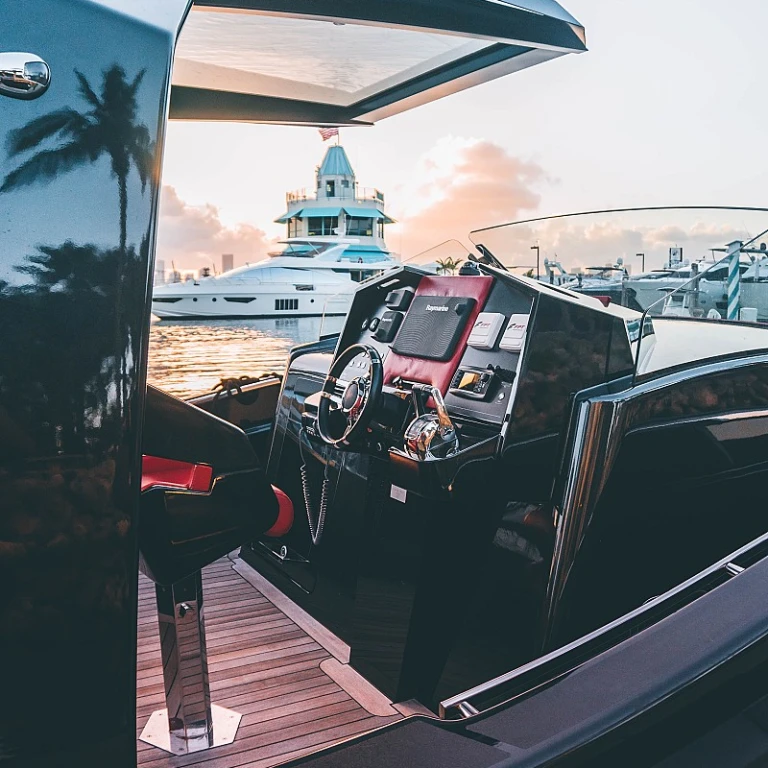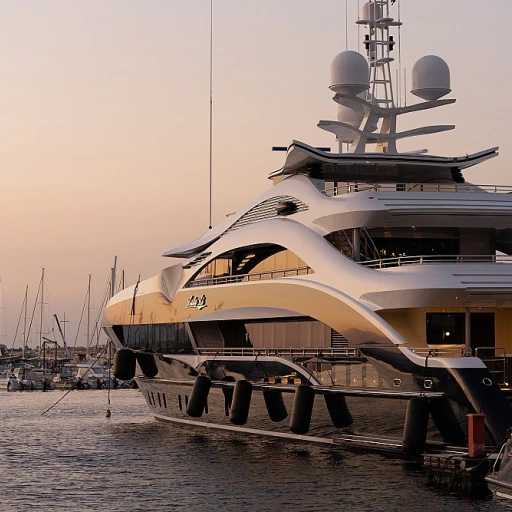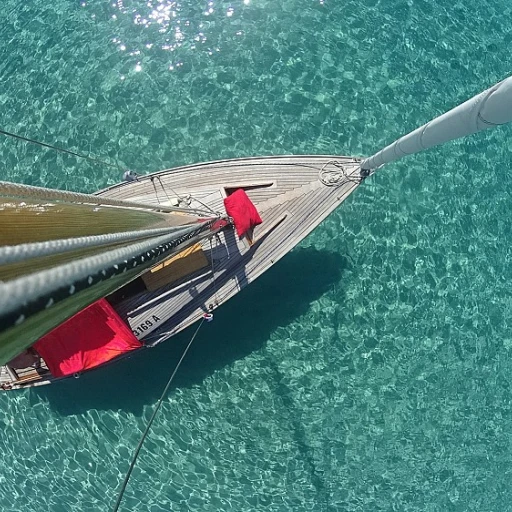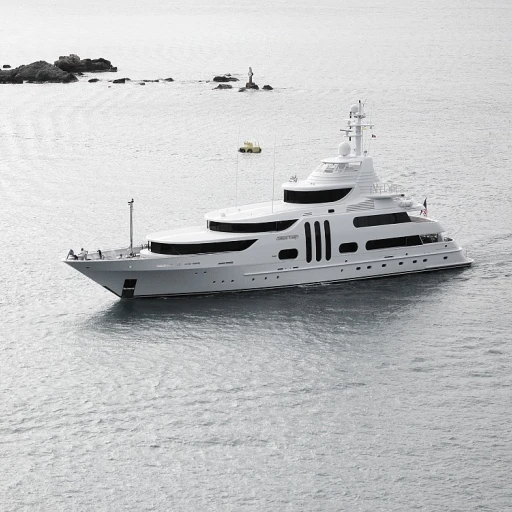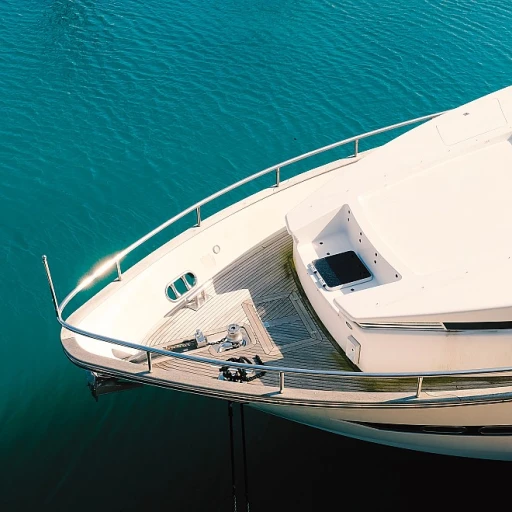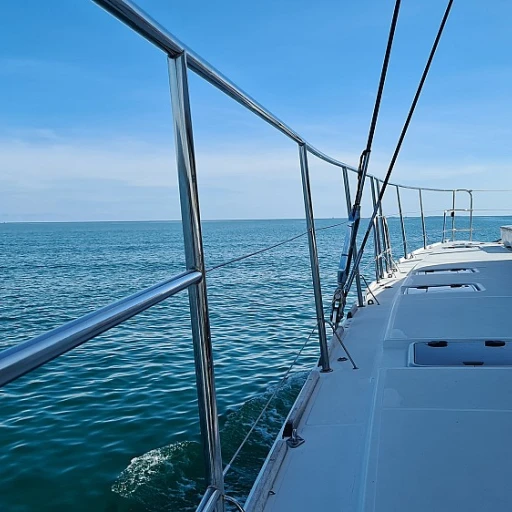
The Role of Drain Plugs in Yacht Maintenance
The Unsung Heroes of Yacht Maintenance
In the world of yachting, drain plugs might not be the first thing that comes to mind, but their role is crucial. These small yet mighty components ensure that your yacht remains in top condition by preventing unwanted water accumulation. Drain plugs act as a safeguard against potential water damage, which can lead to costly repairs if not addressed promptly.
Yacht owners often overlook the importance of these plugs, but they are essential for maintaining the integrity of the vessel. Whether it's a garboard drain or an oil drain plug, each type serves a specific purpose in keeping your yacht dry and functional. Regular checks and maintenance of these plugs can prevent issues like corrosion or leaks, which are common problems faced by yacht enthusiasts.
Moreover, understanding the different types of drain plugs and their applications can help you make informed decisions about your yacht's maintenance. From stainless steel options to more affordable alternatives, the market offers a variety of choices to suit different needs and budgets. As you explore these options, consider the importance of proper installation and maintenance to ensure longevity and performance.
In the following sections, we'll delve deeper into the types of drain plugs available, their installation tips, and common issues you might encounter. Stay tuned to learn more about how these small components play a big role in your yacht's overall health and performance.
Types of Drain Plugs and Their Applications
Exploring the Varieties of Drain Plugs
In the world of yachting, selecting the right drain plug is crucial for maintaining your vessel's integrity. Drain plugs come in various types, each designed for specific applications and conditions. Understanding these can help you make informed decisions for your yacht's maintenance.
Common Types of Drain Plugs
- Garboard Drain Plugs: These are the most common type found on boats. They are typically made from stainless steel or brass, offering durability and resistance to corrosion. Garboard plugs are essential for draining water from the bilge when the boat is out of the water.
- Oil Drain Plugs: Used primarily in the engine's oil pan, these plugs are crucial for oil changes. They come in various materials, including steel and stainless steel, and are designed to withstand high temperatures and pressure.
- Universal Drain Plugs: As the name suggests, these plugs are versatile and can fit a range of drain holes. They are often used as temporary solutions or replacements.
- Cooler Drain Plugs: These are specifically designed for marine coolers, ensuring that melted ice and water can be easily drained without removing the cooler from the boat.
Materials and Their Impact
The material of a drain plug significantly affects its performance and longevity. Stainless steel is a popular choice due to its resistance to rust and corrosion, making it ideal for marine environments. However, the price of stainless steel plugs can be higher compared to other materials. Brass is another common option, offering a balance between durability and cost.
Considerations for Choosing the Right Plug
When selecting a drain plug, consider the specific needs of your yacht. Factors such as the size of the drain holes, the environment in which you sail, and the unit price of the plug should all play a role in your decision-making process. Reading reviews and consulting with experts can also provide valuable insights.
For more detailed information on maintaining your yacht, you might find this guide on cutlass bearings useful.
Installation and Maintenance Tips for Drain Plugs
Ensuring a Secure Installation and Maintenance for Optimal Performance
Proper installation and maintenance of drain plugs are essential to safeguarding your vessel from potential water ingress and ensuring efficient water drainage. Whether you're dealing with a garboard drain, cooler drain, or oil drain, the general steps for installation and care are quite uniform. Here's a guide to help you add these indispensable components smoothly.- Choosing the Right Plug and Tools: Start by selecting the appropriate drain plug. Consider options like stainless steel plugs for durability or universal plugs when versatility is prioritized. Don't forget to secure the right tools such as a stopper pack and plug housing.
- Installation Tips: During installation, align your plug boat to ensure it fits snugly into the drain holes. For easy install, apply a marine-grade sealant around the edges of the plug drain, and then firmly tighten it. This ensures the plug is securely seated, reducing the risk of leaks.
- Routine Inspection and Cleaning: Regularly inspect your drain plugs for wear and tear. Remove any debris or oil build-up around the area, and replace items like worn-out gaskets or a faulty replacement plug promptly. This will maintain the integrity of the plug drain, ultimately prolonging the vessel's lifespan.
- Proper Storage: After every boating session, check that drain plugs are removed to prevent water accumulation when the boat is sat idle. This precaution can mitigate damage over time and keep the boat drain functioning efficiently.
- Budget Considerations: When balancing price with quality, be wary of a regular price versus the unit price of quality drain plugs. Investing in a higher quality stainless steel product at a fair price product may offer superior security against leaks and faults.
Common Issues with Drain Plugs and How to Solve Them
Identifying and Addressing Drain Plug Concerns
In the world of yachting, maintaining the integrity of your vessel’s components is critical to ensuring smooth sailing. Drain plugs, serving as small yet essential parts, can occasionally present challenges. Whether it’s the quality of the materials or issues arising from improper installation, being proactive can help mitigate common drain plug problems. A common issue experienced by yacht owners is related to the wear and tear of drain plug materials like stainless steel or rubber used in the stopper pack. Over time, corrosion can occur, especially if the drain plug is subjected to harsh marine environments. Regularly inspecting and replacing a faulty plug with a durable stainless steel option can avoid potential leaks and maintain the proper function of your boat’s oil drain and cooler drain systems. Another frequent problem involves the oil drain plug of the boat’s oil pan. If not adequately tightened, the plug might loosen, causing oil leakage and contamination in the bilge area. To prevent this, yacht owners are advised to check the oil drain plug regularly and ensure it is securely fastened. Utilizing products reviewed for their reliability can assist in selecting a plug that provides a tight seal, minimizing the chance of leaks. Additionally, the fit of the plug within the drain holes is crucial. Universal plugs might not offer the best security in all yacht models, so selecting a product that matches your boat’s specific measurements is essential. Ensuring the plug housing and hose connections are free from debris and regularly maintained can help address any fitting issues. It's also worth noting the importance of investing in quality replacements. While the unit price or regular price may seem high at first glance, opting for a well-reviewed product will likely save you time and money in the long run by reducing the need for frequent replacements. Overall, adequate maintenance and timely replacement of drain plug components can significantly contribute to the longevity and operational capability of your yacht. Maintaining a list of essential maintenance items, including spare plugs and tools for easy install, will help you stay prepared for any drain-related challenges that might arise at sea.Innovations in Drain Plug Technology
Recent Advancements in Drain Plug Technology
In the ever-evolving world of yachting, the technology surrounding drain plugs has not been left behind. As with many other products in the boating industry, there have been significant advancements aimed at improving functionality, durability, and user convenience. Here are some of the key innovations making waves in the market today:- Stainless Steel Plugs: Widely acclaimed for their resistance to corrosion, stainless steel drain plugs are a popular choice among yacht enthusiasts. These plugs not only offer strength and durability but also maintain their appearance over time, providing a reliable solution for demanding environments at sea.
- Universal Fit Designs: Some manufacturers have embraced the idea of creating universal drain plugs that can fit a wide range of boats. This innovation simplifies the purchasing process, ensuring that skippers can easily find a suitable plug for their vessels without worrying about compatibility issues.
- Advanced Seal Technology: New sealing technologies have been developed to enhance the watertight integrity of drain plugs. These advancements minimize the risk of leaking—a common issue discussed in the yachting community—providing boat owners with peace of mind.
- Easy Installation Features: Modern drain plugs are designed with the end user in mind. Features like easy-install mechanisms allow for quick, hassle-free replacement or fitting, ensuring that maintenance tasks don't end up as major projects.
- Innovative Stopper Packs: Featuring multiple items tailored to specific needs, stopper packs are gaining popularity. These include various sizes and types of stoppers, providing flexibility for multi-purpose use on a single boat.
- Oil Drain and Replacement Solutions: For those concerned about oil management, there are specialized oil drain plugs designed to facilitate easy drainage of the oil pan with accessories like hoses and plug housing, streamlining routine maintenance tasks.
Expert Insights: Choosing the Right Drain Plug for Your Yacht
Expert Advice on Selecting the Ideal Drain Plug
Choosing the right drain plug for your yacht is crucial for maintaining its integrity and performance. With a variety of options available, understanding the nuances of each type can make a significant difference. Here are some expert insights to guide your decision:
- Material Matters: Stainless steel drain plugs are highly recommended due to their durability and resistance to corrosion. They are ideal for saltwater environments, ensuring longevity and reliability.
- Consider the Application: Different drain plugs serve varied purposes. For instance, oil drain plugs are specifically designed for engine maintenance, while garboard drain plugs are essential for bilge drainage. Knowing the specific application will help you choose the right product.
- Ease of Installation: Opt for plugs that offer easy install features. This not only saves time but also ensures a secure fit, reducing the risk of leaks.
- Price vs. Quality: While it's tempting to go for the lowest price product, investing in a high-quality plug can save you from costly repairs down the line. Consider the regular price as an investment in your yacht's longevity.
- Universal Fit: Some plugs offer a universal fit, which can be convenient if you have multiple boats or need a quick replacement. However, ensure they fit securely in the drain holes to prevent any mishaps.
- Read Reviews: Customer reviews can provide valuable insights into the performance and reliability of a plug. Look for products with positive feedback and high ratings.
By considering these factors, you can make an informed decision that enhances your yacht's performance and safety. Remember, the right plug is not just a stopper; it's a crucial component of your boat's maintenance strategy.

